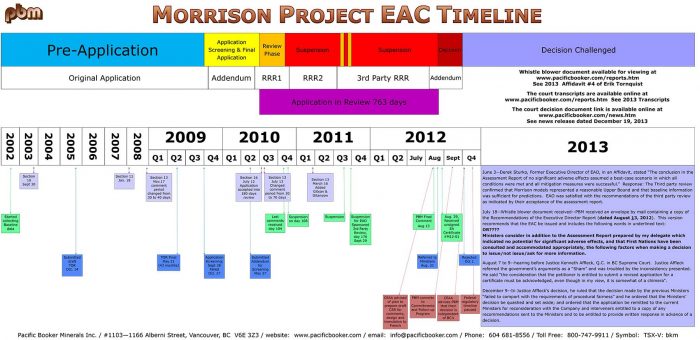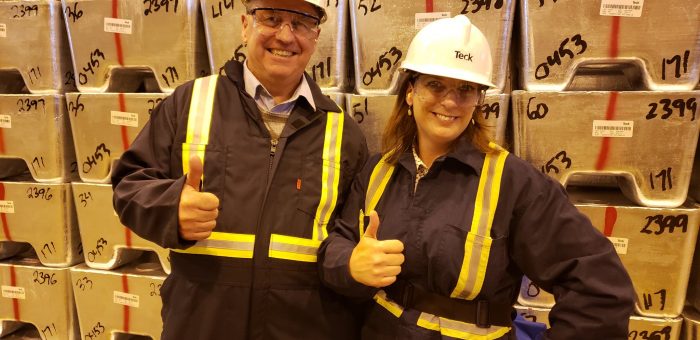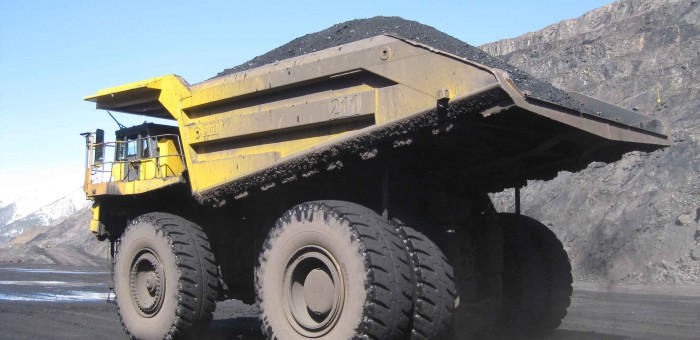Mining
Ongoing regulatory inconsistencies facing Pacific Booker’s Morrison mine project
Yesterday I published a blog post detailing the apparent regulatory inconsistencies facing the advancement of Pacific Booker’s Morrison Mine project. Today during question period I rose to explore this issue further with the Minister of Environment. Today’s question built upon an initial question I asked the Minister of Energy Mines and Petroleum Resources on March 5, 2020.
Below I reproduce the text and video of our exchange.
Video of Exchange
Question
A. Weaver: On March 5, I asked the Minister of Energy, Mines and Petroleum Resources a question concerning regulatory inconsistencies in the provincial government’s handling of Pacific Booker’s proposed Morrison mine. I’d like to explore this a little further.
In 2015, after reviewing the project for a second time, the Ministry of Environment issued a section 17 order that the project undergo further assessment. Despite numerous exchanges with the environmental assessment office and the completion of an in-depth study of Morrison Lake, Pacific Booker has been unable to clarify the precise nature of what is actually required in the section 17 order. For Pacific Booker, this order has been tantamount to a rejection of its project without the ministry formally saying no.
Government recently amended the environmental assessment process to provide certainty of process and clarity of regulatory considerations. When presented with an application for an environmental assessment certificate, the minister is given three options under the 2018 Environmental Assessment Act:
(1) grant the certificate,
(2) grant the certificate with conditions attached or
(3) reject the project.
Pacific Booker’s treatment doesn’t align with the new assessment standards. They’ve been given the opposite of regulatory certainty, and their project has been shunted off for a further assessment. My question is to the Minister of Environment. Considering the recent changes to the environmental assessment process, will he amend the 2015 order to clarify the nature of the work required by Pacific Booker Minerals?
Answer
Hon. G. Heyman: Thank you to the member for the question. I recall the question to my colleague, the Minister of Energy, Mines and Petroleum Resources, in March quite well. As the Minister of Energy and Mines said at the time, he and I can’t speak to the specifics of why the old government made the decision that it made with respect to the proposed Morrison mine.
The member is also correct. We made significant changes to the Environmental Assessment Act through revitalization, and we’re proud of that as our government. We brought new transparency to the act. We’ve included engagement of Indigenous peoples and local communities at the front end, and we have taken steps to ensure that good projects that respect the environment, that respect Indigenous peoples and that respect the public can be approved more quickly with greater certainty.
However, with regard to Pacific Booker, the member is correct. Under the old act, the decision was made to require additional information from the proponent before a final decision on the proposal was made.Under the new legislation or the transition regulation, there is no ability to take a project like Morrison that has proceeded this far down the process and transfer it to the provisions of the new act. But it’s my understanding that the company is currently working through the required regulatory process for further assessment in tandem with the environmental assessment office.
Supplementary Question
A. Weaver: Thank you, Minister, for your answer. I think the minister may have missed the point. Pacific Booker doesn’t know what the section 17 order does because what they’re supposed to do has not been conveyed to them with any certainty. So they are left with an uncertain order, of which they don’t know how to respond. So it’s not possible for them to move through the regulatory process when that process has not been defined in which they could go.
They have conducted detailed assessments of Morrison Lake and its internal wildlife, including measuring water quality and lake mixing patterns as well as investigations into fish habitat and spawning patterns. They have pledged to use cutting-edge technology to reduce groundwater seepage from the tailings storage facility. They’ve even completed a request, and they were the only one asked to do so, to comment on the implications of Mount Polley for their tailings management.
Throughout the protracted environmental assessment process, Pacific Booker has stated its preference to use local suppliers and to hire local workers. The project would generate over 1,000 jobs in the region near Smithers, and it would provide millions of dollars in tax revenue. At a time when the provincial economy is reeling due to the efforts of COVID-19, the project would give that region a much-needed economic boost.
My question, again, to the Minister of Environment is this. Given the extensive work undertaken by Pacific Booker Minerals to examine and reduce the environmental impact of the potential Morrison mine project and the potential economic benefit to the province, will this government commit to ensuring that the company receives a timely, unbiased review of the latest proposal, and in particular, is given clear instructions from your office so that it knows what boxes need to be ticked so that they can follow due process, rather than second-guessing certain people who haven’t made that very clear?
Answer
Hon. G. Heyman: Thank you again to the member for the supplemental question.
The company, of course, has to provide some very specific additional information that was required under the order. The order was specific. Some examples of the type of additional information required are sockeye salmon use of Morrison Lake, upper and lower Tahlo Creek and the Morrison River, hydrogeological and groundwater data for areas between the mine and Morrison Lake and further engagement with the Lake Babine Nation and other impacted First Nations.
I’m advised that the company made its latest submission to the environmental assessment office in December and that environmental assessment office staff met with the company this past February as additional information was required from the company. It is certainly not the intention of our government to make proponents guess at what is required. I checked with the environmental assessment office, and my understanding is that staff there are working to help answer any questions that the proponent has with respect to the information required.
I’m advised that the company plans to provide an update to the environmental assessment office regarding their next steps, and the environmental assessment office will be very happy to assist them in a timely answering of the questions required by the order. As minister, I assure that when the application is complete and ready for reconsideration, it will be considered in a timely manner.
Pacific Booker Minerals and their quest to develop Morrison Mine near Smithers
In 2002, Pacific Booker Minerals began the formal environmental assessment process required to obtain ministerial certification for Morrison Mine, their proposed copper and gold mine near Smithers, BC. A decade later, after $10 million worth of consultations, meetings, and assessments, the company decided to proceed to the next stage of the certification process in which the Environmental Assessment Office (EAO) submits a formal environmental assessment report to the relevant ministers via the executive director. At the time of submission, all indications were that the mine would receive approval. EAO assessment reports had given the project a clean assessment and the company had proposed to undertake measures unprecedented in the copper mining industry to address the project’s environmental risks. Despite the positive environmental assessment, the Executive Director of the EAO chose to recommend that the project be rejected, advice which was followed by Environment Minister Terry Lake. The decision to reject proposed project was ostensibly made due to ongoing concerns about the effects of the project on local salmon populations and water quality in Morrison lake, among other things.
Yet the decision to reject the project on environmental grounds should raise immediate questions about why this project was nixed and not others, given the BC Liberal government’s environmental record in the mining sector. As highlighted in my question posed to the Minister of Energy, Mines, and Petroleum Resources in the House back in March, this is the same government that went to Ottawa in 2014 to lobby the federal government to approve the Prosperity mine, a project that had received two negative assessments by federal review panels. Moreover, the BC Liberals presided over a compliance and enforcement regime that the auditor general described as “inadequate to protect the province from significant environmental risk” and unfunded taxpayer liabilities in the mining industry were estimated at $1.4 billion as of 2017.
The decision to reject the project had serious repercussions for Pacific Booker. Their share price plummeted from $14.95 to $4.95 in one day and many investors lost their life savings. What’s more is that the Ministry failed to inform Pacific Booker of its intention to issue an adverse recommendation and did not provide the company with an opportunity to respond to it, conduct which deviated from the standards outlined in their own user guide.
Rather than face the prospect of beginning the assessment again Pacific Booker decided to enter into litigation with the government over its decision to reject the project. Among other things, the case was fought over whether the Ministry had violated standards of procedural fairness by denying the company the chance to respond to the Executive Director’s recommendation. During the court proceedings, Justice Affleck would describe the environmental assessment process as a “sham” and accuse the province of repeatedly “moving the goalposts” during the assessment process. Perhaps unsurprisingly, the Supreme Court would rule in favour of Pacific Booker, writing that the firm “ought to have been entitled to know at least the essence of the adverse recommendations and ought to have been entitled to provide a written response”.
The ruling from the Supreme Court quashed the decision to reject the mine and ordered the project to be reconsidered by the government. Yet once again, the government elected not to approve the mine and ordered that the project undergo further assessment with the requirement that additional information be collected. Despite repeated exchanges with the environmental assessment office in which Pacific Booker attempted to determine what exactly this additional information is, the firm has been unable to obtain a clear answer from government officials, placing the project in a state of limbo. As of early 2020, the company was still in the process of working through the Supplemental Application Information Requirements with the EAO, in accordance with the order issued by the Ministers.
Based on the previous government’s environmental record in the mining sector (raised earlier), there has been speculation that the decision to reject the mine had little to do with environmental concerns and everything to do with political calculation. What could these political concerns have been? It is difficult to determine one single political factor that led to the decision around the Morrison mine but several interrelated developments which are explored in more detail below provide insight into the political circumstances surrounding the project.
Two ‘Final’ Environmental Assessment Reports
In 2013, before the court proceedings began, a whistleblower provided Pacific Booker with a copy of an assessment report on the Morrison mine dated August 21st. The report contained notable differences from its final version that was ostensibly used to inform the government’s final decision and released publicly. Subsequent emails obtained by the company through a Freedom of Information (FOI) request have revealed that the Minister had requested changes to the original document which should raise questions about the political neutrality of the decision to reject the mine. On July 16th 2014, the project assessment director Chris Hamilton wrote to Sarah Bevan: “Hmm, I recall the first PBM knew about the no was a phone call on Oct 1, a Monday. Could you be thinking about the two versions of the recommendations? One was dated Aug 21, the date of the referral and then Minister Lake had asked for changes to that doc, so the second was dated Sep 20. Could that be it?”
To date, the Ministry has denied any allegations of political interference in the environmental assessment process. In his affidavit in Pacific Booker v British Columbia, David Sturko claimed that: “The clarifications requested by Minister Lake were (a) correction of a factual error relating to the project’s anticipated contribution to Provincial Gross Domestic product, and (b) more specificity regarding the nature and basis of the additional factors I cited in my recommendations at the end of the document”.
The Relentless Pursuit of LNG
For some time, the Lake Babine Nation has been opposed to the Morrison mine. Members of the community have expressed significant concerns about the effects of the project on local salmon populations which are important to the nation for cultural, historical, and economic reasons. When the decision was made to the reject the project, a secondary justification that the director of the EAO provided in his report was the “moderate to strong” strength of the Lake Babine Nation’s claim to aboriginal title in the area. Based on the strong opposition of the nation to the project, it is possible they would have pressed an aboriginal title claim in court to delay or block the project from proceeding.
At the time the project was rejected this appeared to be the only consideration that the province had given to First Nations issues. However, subsequent developments have made political conflict involving the Lake Babine Nation increasingly salient to the delayed progress on the project. In 2016, the Lake Babine Nation cautioned the province that their cooperation on major LNG projects, including the Prince Rupert Gas Transmission line, could be contingent upon the government not overturning its decision on the Morrison mine. Referencing the pipeline, Chief Wilf Adam was quoted in Business in Vancouver as saying: “If they overturn or change their decision in favour of PBM to start this mine, then all gloves are off – and any agreement we made with the province,”.
Raising the issues that have emerged around the Lake Babine Nation is in no way meant to diminish the obligation that the government has to undertake meaningful consultation with indigenous communities before projects can proceed. Resource development needs to be based on equal partnership between all parties with interests at stake in proposed projects. Rather, highlighting the political conflict involving the Lake Babine Nation is meant to bring attention to the fact that decisions involving the Morrison mine may have been influenced by political calculation that had little to do with the proposed project itself.
Project Suspension
Just before the Ministry was ready to release the order requesting further assessment, the Morrison mine was placed under suspension after the Mount Polley Mine disaster, pending the outcome of a provincial review. At the time, the Pacific Booker was the only project that was placed under suspension while the government was investigating the Mount Polley incident. To date, no explanations have been given for why the Morrison mine was suspended and not others. The delay would last for approximately one full year before the order was released.
Pipeline Politics
At the time the project was rejected, the BC Liberals were embroiled in a dispute with Alberta over the construction of the Enbridge pipeline where the most contentious issue in negotiations was revenue sharing. The Liberals took the position that BC would need to receive a higher share of the royalties for the amount of environmental risk the province would absorb in order for the pipeline to proceed. However, comments from some observers had implied that taking this stance placed BC in a weak negotiating position due to the BC Liberal government’s poor environmental record. Further compounding the government’s problems was a looming election in which the NDP had attempted to make the Enbridge pipeline an election issue. Then BC NDP leader Adrian Dix had been heavily critical of the government’s environmental record and had accused the BC Liberals of selling out BC’s interests to the federal government and to Alberta.
Towards a Resolution?
While there is no smoking gun which serves evidence that the province had politicized the environmental assessment process, the suspicious circumstantial evidence that suggests otherwise does little to inspire confidence from British Columbians in their government and has damaged the province’s reputation as a good place to do business. Furthermore, the decision to reject the project has had significant ramifications for Pacific Booker and its investors. Small investors in the project have lost their life savings and have been forced to continue to work well into their retirement years. Based on these factors along, this government has a responsibility to ensure that this project is given a fair hearing in what is now effectively its third environmental assessment.
Exploring regulatory inconsistencies facing Pacific Booker’s Morrison mine project
Today during question period I rose to ask the Minister of Energy, Mines and Petroleum Resources about what appears to be regulatory inconsistencies facing the advancement of Pacific Booker’s Morrison Mine project. As you will see from the exchange below, I was not particularly impressed with the Minister’s response to my questions.
I intend to explore this issue further in the coming weeks.
Below I reproduce the video and text of the Question Period Exchange.
Video of Exchange
Question
A. Weaver: I’m sure every member of this House will agree that a stable regulatory environment is key to maintaining B.C.’s reputation as a welcoming place to do business. This means that the approval of natural resource projects must be based on scientific evidence and not politics. Yet in 2012, upon recommendation from the executive director of the environmental assessment office, the B.C. Liberals rejected the Morrison mine project proposed by Pacific Booker Minerals, despite it having received a positive environmental assessment. In justifying their decision, they cited environmental concerns about the effects of the mine on water quality in Morrison Lake and local salmon populations, despite already having a positive environmental assessment.
Despite their rejection of the Pacific Booker project, in 2013 the B.C. Liberals went to Ottawa to lobby the federal government to approve the Prosperity mine, a project that had received two negative assessments by federal review panels. There’s some suspicion that the decision around the Morrison mine had less to do with environmental concerns and more to do with political calculation.
My question is to the Minister of Energy, Mines and Petroleum Resources. Has this government been able to determine why this company was treated so differently from others at the time? And how will it prevent situations like this from happening in the future?
Answer
Hon. B. Ralston: I’d like to thank the member for Oak Bay–Gordon Head for his question. I’m sure the member will appreciate that I’m not in a position to advise what led the former government to make its decision about the proposed Morrison mine. What I can say, though, is that their approach was shortsighted and certainly didn’t bring certainty to the sector.
Our government has taken a different approach. My predecessor, as minister, initiated the Mining Jobs Task Force, which worked hard with First Nations, industry and communities to find ways to strengthen this fundamental, foundational industry.
There were 25 recommendations emanating from the task force. They’ve all been accepted by government, and almost all of them have now been implemented. We have made two mining tax credits permanent, bringing immediate benefits to the B.C. mineral exploration sector by adding more certainty. We’ve invested $1 million for the mining innovation roadmap, $1 million for the Regional Mining Alliance.
As further evidence of the strengthening of the sector, the Ontario Teachers Pension Plan just signed a $300 million investment deal to provide an investment in the New Afton mine, just outside the civic boundaries of Kamloops.
Supplementary Question
A. Weaver: I must admit that was a lot of information about a lot of mines that weren’t the mine I’m actually talking about. Maybe I can try again.
A key element of the previous government’s unrealistic strategy for natural resource development revolved around, as we all know, LNG. We know that certain natural gas projects were located in areas close to the Morrison mine. Comments from groups engaged in the Pacific Booker project have indicated that the province was facing significant pressure to avoid reopening discussions around the Morrison mine in order to obtain the support necessary for the Prince Rupert gas transmission line.
The decision to reject the project had serious repercussions for Pacific Booker. Their share price plummeted, from $14.95 to $4.95 in one day, and many investors lost their life savings. What’s more is that the ministry failed to inform Pacific Booker of its intention to issue an adverse recommendation and did not provide the company with an opportunity to respond to it.
After a legal battle in which the Supreme Court found that this conduct violated standards of procedural fairness and that the environmental assessment office recommendation be presented to cabinet for reconsideration, the government once again rejected the project in order to undergo further assessment. However, in its order, the government appeared to issue unclear directions that substantially delay the process. As of 2019, in September….
Interjections.
Mr. Speaker: Members.
A. Weaver: As of Sep 2019, Pacific Booker had yet to be fully provided with this opportunity. My question, again, is to the Minister of Energy, Mines and Petroleum Resources. When is this firm going to have the chance to have their project undergo further assessment, as put forward by the Supreme Court?
Answer
Hon. B. Ralston: The short answer is that the company is currently working through the required regulatory processes for further assessment. The further assessment for the proposed project includes the requirement for a supplemental application information requirement. There are a number of requirements. The EAO continues to work with the company on this, and I’m advised that the latest submission was received by the EAO in December 2019.
Presenting at the Clean Energy BC Spring Conference: Powering Generations — Legacy to the Future
Today I had the distinct honour of giving a keynote presentation at the 2019 Spring Conference of Clean Energy BC whose theme was Powering Generations: Legacy to the Future. After the presentation we toured the Teck smelter in Trail to explore innovation in the mining sector first hand.
Below I reproduce the text and slides of my speech.
Text and Slides of Speech
It’s a distinct honour for me to be invited to address you, the delegates to Clean Energy BC’s Spring Conference: Powering Generations: Legacy to the future.
 Over these past 25 years Clean Energy B.C. has been the voice of British Columbia’s Clean Energy sector and I am sincerely grateful for your ongoing contributions to our province.
Over these past 25 years Clean Energy B.C. has been the voice of British Columbia’s Clean Energy sector and I am sincerely grateful for your ongoing contributions to our province.
The BC Green Party and I share your goal to support the growth of British Columbia’s clean energy sector and we will continue to do what we can to improve the regulatory and economic environments for clean energy production through our work in the B.C. legislature.
Since first getting elected in 2013, I’ve watched growing uncertainty emerge in British Columbia’s clean energy sector. I’ve watched the Canadian Wind Energy Association pull out of BC. I’ve watched BC Hydro’s standing offer program grind to a halt.
I’ve witnessed the release of a poorly researched report to justify government’s ideological position on independent power producers. And I’ve watched a growing sense of overall frustration emerge as your sector struggles to remain viable.
Of course, as we all know, government’s decision to proceed with the construction of the Site C hydroelectric project was both unnecessary and fiscally-foolish.
It has undermined the investments many of you made in clean energy here in BC. And it puts the ratepayer on the hook for inevitable cost overruns down the road.
But we are where we are and for me, it’s important to look ahead.
I entered politics via an unusual route. By now, most of you know that prior to my election as the MLA for Oak Bay – Gordon Head (and subsequently becoming leader of the B.C. Green Party), I was Lansdowne Professor and Canada Research Chair in Climate Modelling and analysis at the University of Victoria.
I’d served as a Lead Author on the United Nations Intergovernmental Panel on Climate Change 2nd, 3rd, 4th and 5th scientific assessments. I was Chief Editor of the Journal of Climate and I had the honour of participating as a member of BC’s first Climate Action Team set up in 2007 under Gordon Campbell’s leadership.
The year 2007 was a remarkable period in British Columbia’s history with respect to the development of climate policy. It was also a particularly noteworthy time for me.
I’d been publishing papers in the field of climate science for more than two decades, all the while listening to political leaders around the world talk about the importance of dealing with global warming while concomitantly doing virtually nothing to reduce greenhouse gas emissions and offering staggering subsidies to the fossil fuel sector.
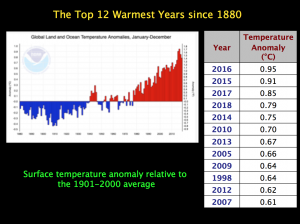 But in 2007 in British Columbia I finally saw a government take the matter seriously and recognize the challenge of global warming for what it was: an economic opportunity for innovation like never before. Gordon Campbell recognized that early leadership would pay off and that all eyes in the world would be turned to BC in 2010 when we hosted the Winter Olympics.
But in 2007 in British Columbia I finally saw a government take the matter seriously and recognize the challenge of global warming for what it was: an economic opportunity for innovation like never before. Gordon Campbell recognized that early leadership would pay off and that all eyes in the world would be turned to BC in 2010 when we hosted the Winter Olympics.
On November 20, 2007 the Honourable Barry Penner, Minister of Environment, introduced the Greenhouse Gas Reduction Targets Act, which put into law British Columbia’s 2020 reduction target of 33% and a new 2050 reduction target of 80% relative to 2007 levels.
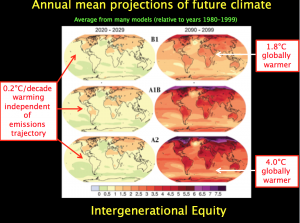 The act also required carbon neutrality for the public sector, including universities, schools, hospitals, Crown corporations, and the government by 2010. And over the next several years as government rolled out its policy measures, BC head off on a path to meet its legislated targets.
The act also required carbon neutrality for the public sector, including universities, schools, hospitals, Crown corporations, and the government by 2010. And over the next several years as government rolled out its policy measures, BC head off on a path to meet its legislated targets.
But all of our successes started to unravel shortly after British Columbia’s provincial leadership changed in 2010. In fact, every year since the 2011 change of leadership, emissions have gone up.
Why? Because of the signal government sent to the market that our emissions reductions targets no longer mattered — that economic prosperity would be found in industries from the last century, and that they would help take us back there.
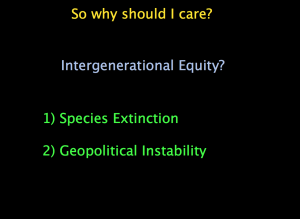 It happened almost immediately after the leadership of the BC Liberals changed. In fact, I remember participating with Judith Sayers, Paul Kariya and Graham Horn (from Innergex) at a press conference hosted by Clean Energy BC in September 2011 where we pleaded with government to stick with its plan to become self-sufficient in clean energy.
It happened almost immediately after the leadership of the BC Liberals changed. In fact, I remember participating with Judith Sayers, Paul Kariya and Graham Horn (from Innergex) at a press conference hosted by Clean Energy BC in September 2011 where we pleaded with government to stick with its plan to become self-sufficient in clean energy.
In 2012, knowing that scientists had done their job in defining the problem and that it was up to politicians to do theirs if we are to deal with the challenge of global warming — and they are not — I accepted an invitation to run as a candidate representing the BC Green party. I could no longer sit on the sidelines as the legacy of Mr. Campbell’s climate leadership was dismantled.
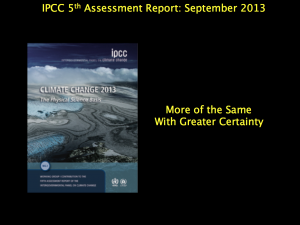 The BC Liberals under Christy Clark had stifled clean innovation and introduced policies that further entrenched “dig-it and ship-it” oil and gas development.
The BC Liberals under Christy Clark had stifled clean innovation and introduced policies that further entrenched “dig-it and ship-it” oil and gas development.
And were the BC Greens not holding the balance of power in a minor government, I fear that the BC NDP would be no different (as witnessed by the outrageous giveaway involved in their proposed further subsidies to the LNG industry).
When the market no longer supported these activities, successive governments doubled done by creating more and more subsidies in a desperate attempt to squeeze water from a stone.
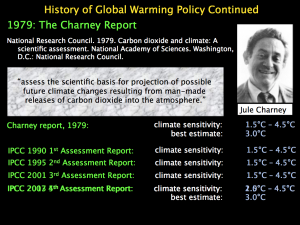 I often reflect back on the spring of 2017 when my colleagues and I were locked in negotiations with both the BC NDP and the BC Liberals as we hashed out the foundations of a confidence and supply deal. I reflect back to remind me of why I got into politics and why we ended up supporting a BC NDP minority government.
I often reflect back on the spring of 2017 when my colleagues and I were locked in negotiations with both the BC NDP and the BC Liberals as we hashed out the foundations of a confidence and supply deal. I reflect back to remind me of why I got into politics and why we ended up supporting a BC NDP minority government.
Climate scientists had done their job in defining the problem and that it was up to politicians to do theirs if we are to deal with the challenge of global warming. Only the BC NDP appeared serious in its desire to reduce our greenhouse gas emissions.
And so the seeds were planted for what would end up becoming CleanBC.
CASA – our confidence and supply agreement – underpins B.C.’s minority government. It is an agreement to work in good faith, with no surprises, with the B.C. NDP.
 CASA has provided the B.C. Green caucus with an opportunity to champion key aspects of our economic platform, and the ability to work in partnership with government on our priority issues like climate policy.
CASA has provided the B.C. Green caucus with an opportunity to champion key aspects of our economic platform, and the ability to work in partnership with government on our priority issues like climate policy.
From our perspective, of course, these two files are one and the same.
Two key elements of our 21st century economy platform were embedded in the CASA agreement to help us identify and hence seize economic opportunities in the emerging economy.
The first was the Emerging Economy Task Force set up to advise government on how to respond and adapt to emerging economic challenges and opportunities. Government needs modernizing so that it is considerably more responsive to technological innovation.
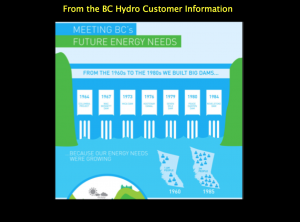 The Emerging Economy Task Force looks to the future, identifying emerging trends and advising government on how to maintain our competitiveness and achieve prosperity amidst these changes.
The Emerging Economy Task Force looks to the future, identifying emerging trends and advising government on how to maintain our competitiveness and achieve prosperity amidst these changes.
The second element from our platform integrated into CASA was the Innovation Commission (now Innovate B.C.) as well as the appointment of an Innovation Commissioner.
The innovation commissioner serves as an advocate and ambassador for the B.C. technology sector in Ottawa and abroad, to enable B.C. companies to more easily tap into existing federal programs and build key strategic relationships internationally.
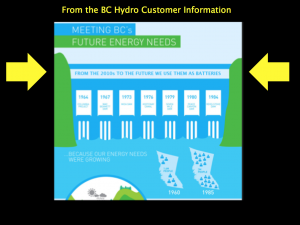 I’m confident that both of these initiatives will continue to bolster and grow key sectors of our economy.
I’m confident that both of these initiatives will continue to bolster and grow key sectors of our economy.
But of course, the most important words in CASA from my perspective are:
“Implement a climate action strategy to meet our targets”
which is why we pushed government to legislate these in the spring of last year:
GHG emissions are to be reduced by at least 40 per cent below 2007 levels by 2030, 60 per cent by 2040, and 80 per cent by 2050.
Targets without a plan to meet them are not worth the paper they are written on. Canadian political history is littered with a legacy of missed targets. And that’s why we turned our attention to delivering a pathway to reach these targets.
A meaningful climate plan requires careful planning, innovative ideas, and a new economic vision for how B.C. will prosper in a changing and challenging world.
If we are to meet our legislated targets — we will be doing so with clean energy — likely following the lead of people in this room.
In that regard, B.C. is setup to succeed. From our access to cheap, renewable energy, to our educated workforce, to our innovative business community, to the quality of life we can offer here, together with British Columbia’s natural beauty, we have an opportunity to develop our Province into one of the most prosperous jurisdictions in the world.
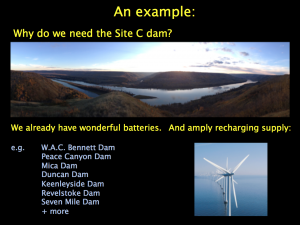 Our challenges are too big, and the consequences too profound, to ignore this opportunity.
Our challenges are too big, and the consequences too profound, to ignore this opportunity.
We stand to gain by building on the expertise that our neighbours have already developed in these areas. And yet, there is still so much room to grow in this sector, to improve upon current technologies and policy innovations.
The approval Site C was a terribly disappointing decision for me because I believe small-scale, distributed energy projects are the way of the future for B.C. and that we should fundamentally change the mandate of B.C. Hydro.
B.C. Hydro should no longer be the builder of new power capacity.
Rather, it should be the broker of power deals, transmitter of electricity, and leveller of power load through improving British Columbia power storage capacity.
Let industry risk their capital, not taxpayer capital, and let the market respond to demands for cheap power.
We need to optimize support for clean energy development, including grid storage for community or privately generated power and work with neighbouring jurisdictions to expedite the phase out of fossil fuel powered electricity generation.
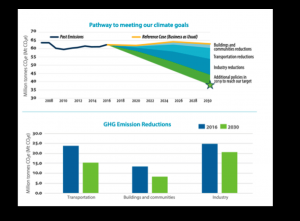 The future of economic prosperity in B.C. lies in harnessing our innate potential for innovation and bringing new, more efficient technologies to bear in the resource sector.
The future of economic prosperity in B.C. lies in harnessing our innate potential for innovation and bringing new, more efficient technologies to bear in the resource sector.
B.C. will never compete in digging dirt out of the ground with jurisdictions that don’t internalize the same social and environmental externalities that we value.
We will excel through being smarter, more efficient, cleaner and by working together to solve our problems.
This means that we not only export the dirt, but we also export the knowledge, technology and value added products associated with resource extraction.
To get a fair value for our resources that deliver maximum benefits to our communities, we need to get smarter and more strategic when it comes to embracing innovation.
Government should be doing more to support these initiatives and create fertile ground for a sustainable, resilient, and diverse economy.
We should be using our boundless renewable energy resources to attract industry, including the manufacturing sector, that wants to brand itself as sustainable over its entire business cycle, just like Washington and Oregon have done.
We should be setting up seed funding mechanisms to allow the B.C.-based creative economy sector to leverage venture capital from other jurisdictions to our province.
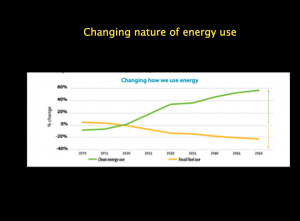 By steadily increasing emissions pricing, we can send a signal to the market that incentivizes innovation and the transition to a low carbon economy.
By steadily increasing emissions pricing, we can send a signal to the market that incentivizes innovation and the transition to a low carbon economy.
The funding could be transferred to municipalities across the province so that they might have the resources to deal with their aging infrastructure and growing transportation barriers.
Yes, we should be investing in trade skills, as described, for example, under a B.C. jobs plan.
But we should also be investing further in education for 21st century industries like biotech, high tech and cleantech. It’s critical that we bring the typically urban-based tech and rural-based resource sectors together.
Similarly natural gas has an important role to play, but we should use it to use in our domestic market and explore options around using it to power local transport.
Global investment trends are being driven by the world’s shared Paris commitments, predicated on the fact that keeping global warming under 2 degrees Celsius is far more cost-effective than dealing with the effects of a temperature rise above that level.
This shift presents a significant opportunity for B.C.’s economy.
Our province is well poised to bolster its leadership in the cleantech sector – we have a strong competitive advantage in the building blocks required to foster a knowledge-based economy.
For we know responding to the challenge of climate change is both an intergenerational opportunity and an intergenerational responsibility.
CleanBC’s sectoral approach doesn’t simply show a plausible pathway to meeting our targets – rather, it drives a return to the vision of a clean 21st century economy.
We have one of the best public services in the world and for a long time they have had the policies ready to get us there.
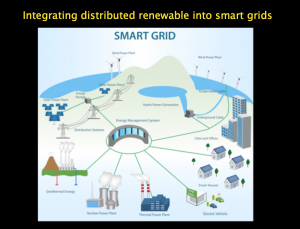 What has been missing is political leadership. This minority government must – and will – show that leadership.
What has been missing is political leadership. This minority government must – and will – show that leadership.
I’m hopeful, but still wary of our starting point and the strength of the status quo.
Yet I am truly excited about the prospects that lie ahead for this minority government. We’ve accomplished a remarkable amount already in just two short years.
But there is so much more to do. The years ahead will require all of us to come together to look for areas where we can be partners – to drive the innovation that will enable us to electrify our economy and decarbonize our energy systems. I don’t doubt that many of the emerging solutions we need will in fact come from the people in this room.
The transition to a low carbon economy presents an exciting challenge for the Clean Energy sector. For example, one of the flagship proposals within CleanBC is the aggressive Zero Emission Vehicle which came into law with the passage last week of the Zero Emission Vehicle Act.
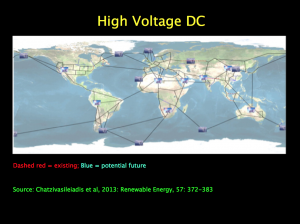 This act mandate that zero-emitting vehicle must make up 10% of light-duty vehicle sales by 2025, 30% by 2030, and 100% by 2040. The good news is that in the month of May alone, 15% of all new light-duty vehicle sales were zero-emitting.
This act mandate that zero-emitting vehicle must make up 10% of light-duty vehicle sales by 2025, 30% by 2030, and 100% by 2040. The good news is that in the month of May alone, 15% of all new light-duty vehicle sales were zero-emitting.
With the electrification of the transportation sector and our built environment comes the opportunity for innovation in smart grid systems.
Whether it be interconnecting myriad distributed production, with innovative local storage systems and point to point high voltage DC transmission, or whether it be the design of new electric transportation systems, or whether it be electrification of our natural resource sector, Clean Energy BC has a strong and vibrant future in our province.
And I remain committed to your sector and I ask that you help me help you. I don’t know what I don’t know. I don’t have all the solutions… but, I know that it is not this: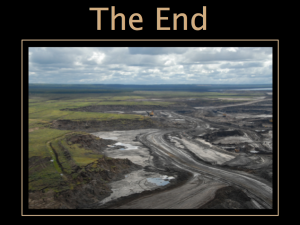
Innovation in British Columbia’s mining sector — a vision for the future
Today I had the distinct honour of providing opening remarks for the Social Innovation in Mineral Exploration Panel at the Association for Mineral Exploration (AME) 2019 Roundup conference in Vancouver.
I took the opportunity to outline a BC Green vision for innovation in the mining sector. Below I reproduce the text of my speaking notes. I’ll post a video of my presentation if I can find one online. I explored the issue of social innovation more thoroughly during my oral presentation.
Text of Opening Remarks
Thank you very much for the kind introduction and for inviting me to speak with you all today.
I must admit that I am very pleased to have the opportunity to make remarks before the panel on innovation and mining. There are few conversations that I think are more interesting in our province right now than how our traditional resource sectors can harness technology and innovation and develop new economic opportunities.
Before I get to that though, I should also let you know that mining is actually near and dear to my heart. As many will know, I am a faculty member on leave from the School of Earth & Ocean Sciences at the University of Victoria — a climate/paleoclimate scientist surrounded by geologists!
I’ve also had a long standing interest in mining stock investing (which, sadly, I’ve had to take a break from since getting elected).
But back to what I am here today to talk to you all about – the opportunity we have to harness innovation in our natural resource sectors – and specifically mining – to build low carbon economic opportunities for communities across our province.
I truly believe that mining is a bedrock industry that sustained communities across our province for many decades. Pun intended.
In my almost 6 years as an MLA I have had the opportunity to visit a number of different mining operations across our province and I’ve seen first hand just how important these projects are to the communities around them.
From the large Teck metallurgical coal mines in the Elk Valley to the Small Eagle graphite play near Nelson; from the Imperial Metals Mt. Polly Mine to Teck’s Highland Valley Copper, the pride that employees and employers take in BC’s rich mining history is evident to me.
With over 30,000 workers directly employed by the sector, and an estimated $9.9 billion contributed to BC’s economy, mining’s importance to our economy today is undisputed.
What I think is less known, but perhaps is even more important, is just how much our mining industry has to contribute to the creation of a low carbon economy.
We are at the start of a major economic shift – one that is taking place right across the world.
Slowly but surely, jurisdictions are recognizing that sustainable economic prosperity must go hand in hand with reducing our carbon pollution.
It’s critical that this isn’t approached as an environmental mission – but as an opportunity to create new, sustainable economic opportunities right across our province even as we reduce our climate pollution.
To seize this opportunity we must be willing to embrace innovation – both in terms of the technologies we use to make our operations more efficient, and economically viable, and in terms of the transition to low carbon technologies.
Let’s look at technology first.
Bryan Cox, the President and CEO of he Mining Association of BC put it very articulately in the Price Waterhouse Cooper 2017 industry update when he said:
“The way I see it, mining is a tech industry and when both sectors grow, the entire province benefits.”
In my opinion, this is exactly the way to view the opportunity technology and innovation provides the resource sector. It is not as some separate force working from the outside – it must be ingrained in what we do.
I think there is a tendency to think of the tech sector as a “south-west” BC industry – one with little direct benefit to other regions of the province.
Certainly, it’s true that there has been a significant expansion in “tech industry” in Vancouver and Victoria. But if you ask anyone involved in this industry, they will tell you exactly what Mr. Cox so succinctly put.
We must view all our industries – especially our long standing resource industries as “tech industries”.
So what does this look like in practice? Let’s talk about one of my favourite companies: MineSense.
The future of economic prosperity in BC lies in harnessing our innate potential for innovation and bringing new, more efficient technologies to bear in the resource sector.
MineSense’s real-time, sensor-based ore sorting technologies embody BC innovation at its finest and provide a perfect example of what’s needed for BC to seize new opportunities from innovation.
BC will never compete in digging dirt out of the ground with jurisdictions that don’t internalize the same social and environmental externalities that we value.
We will excel through being smarter, more efficient, & cleaner.
This means that we not only export the dirt, but we also export the knowledge, technology, and value-added products associated with resource extraction.
And that’s where companies like Minesense come in.
But there is also a second critical opportunity to harness innovation in the mining sector – and that is by embracing the goals set out in Clean BC – British Columbia’s economic strategy to address climate change.
I entered politics back in 2013 to ensure that BC’s strategy to address climate change was put back on track. This wasn’t about simply putting in place new environmental policies.
CleanBC should not be viewed only as a climate plan – it’s an economic vision focused on innovation & opportunities. And B.C. has all the strategic advantages needed to seize these low-carbon economic opportunities.
By tackling the challenges presented by climate change, with carefully designed policies, B.C.’s economy can grow in new ways. CleanBC offers a pathway for B.C. to be on the cutting edge of the low-carbon economy.
For the mining sector I believe that there are two main areas of opportunity: First by embracing the electrification of our mining operations and shifting to lower pollution fuels, and second, by ensuring BC mines – and the minerals and metals we mine for – are directly linked to the growing demand for clean technologies.
The business case for electrification is becoming ever more convincing – both as a driver of cost reduction and efficiency, as well as ensuring companies have the social license to operate.
Seizing the opportunities of electrification and a fuel shift will require close coordination between industry and government. Clean BC starts this process with new incentive programs and policy changes that support a transition.
For example, these programs include a new heavy-duty vehicle incentive program that will provide funding to promote the purchase of energy efficient equipment for large transport trucks.
Our goal is to have the cleanest industry in the world – one that leverages our abundant renewable electricity in their industrial operations.
These changes won’t happen overnight – and no one seriously would expect them to. But we must be committed to embracing new innovations when they come along. And government must do its part to ensure that companies who are serious about electrification have access to the reliable electricity they will count on.
There is one other area where I believe government and industry must work together to harness the power of innovation and technology.
We must ensure that the standards that regulate our mining industry are kept up to date, and that in addition to the economic benefits mining provides our province, its social and environmental impacts are being accounted for.
The Mt. Polley tailings pond breach hurt public confidence in government and industry’s ability to adequately protect the natural environment during mining operations. Public trust and confidence is a critical component of a successful mining industry.
The way to build public trust is clear – we must ensure that our operations leverage the best available technology and the best available practices. Innovation cannot be a buzz-word we use – and this is something government is particularly guilty of. Innovation is more than just the latest technology. It is a way of operating where we are committed to evidence based decision-making and solving problems before they arise.
Once again, this is something the government and industry must work together on.
So how do we put this altogether? How do we embody a way of operating that is committed to innovation?
For me, there has been one piece in particular that has been missing from most governments approaches when it comes to harnessing innovation and really developing a new economic road map for our province.
What’s missing has been “vision”.
We won’t be able to harness the true economic potential of innovation by accident.
We won’t be able to meet our climate targets and develop new economic opportunities by accident.
We must know what future we want to build and drive towards.
This is what the BC Greens started with our initial innovation policies.
The first piece was the Emerging Economy Task Force.
We proposed the Emerging Economy Task Force to enable government to adapt and respond to changes on the horizon. We need to modernize government so that it is considerably more responsive to technological innovation.
The role of the Emerging Economy Task Force is to look to the future, identify emerging trends and advise government on how to maintain our competitiveness and achieve prosperity amidst these changes.
The second item from our platform that we integrated into our agreement with the NDP is the Innovation Commission (now Innovate BC) as well as the appointment of an Innovation Commissioner.
The innovation commissioner was proposed to be an advocate and ambassador on behalf of the B.C. technology sector in Ottawa and abroad, to enable B.C. companies to more easily tap into existing federal programs and build key strategic relationships.
By getting these two pieces in place, we have started to change the conversation about innovation policy in government.
We are now at an all-important next step.
In the coming months, the BC Greens want to have a deliberate conversation with stakeholders across British Columbia about innovation, and how government and industry can work together to build new economic opportunities.
We want to understand the barriers that you think need to be removed, and the opportunities you think we can seize.
With the budget in the Spring I expect to see Clean BC fully funded and start to roll out. This will provide a critical opportunity for a conversation about BC Hydro’s role in supporting the electrification of industry, and innovation in general.
The future I imagine is one where our natural resource sector is globally known as the cleanest and most innovative in the world.
I want to be a jurisdiction where companies try out cutting edge technologies to enhance the efficiency of our operations.
I want us to be ever more connected to the global supply chain for minerals needed to construct the solar panels and wind turbines we use to power our economy and the electric vehicles we use to navigate our roads.
I want to see the growth of B.C.’s technology sector as an asset that facilitates greater innovation through technology usage and partnerships with other economic sectors.
This is my vision. It’s not easy – but I think BC is up to the challenge.
Thank you for your time.

